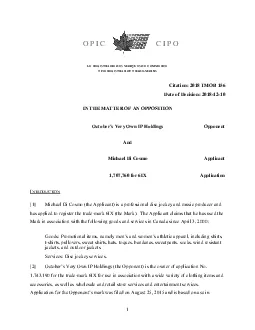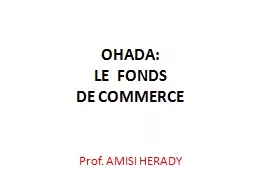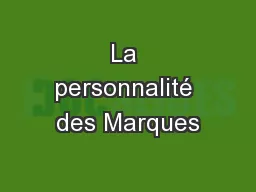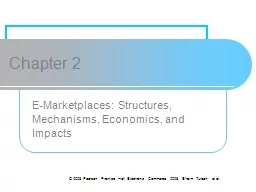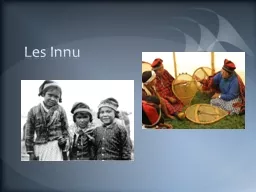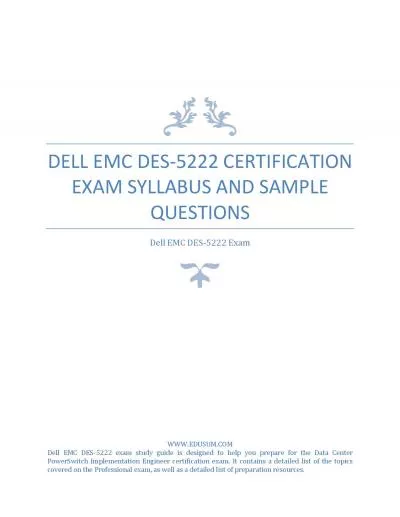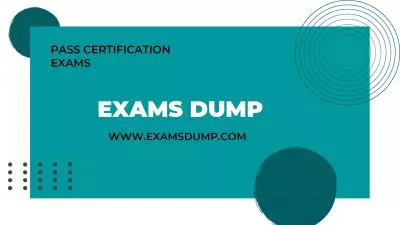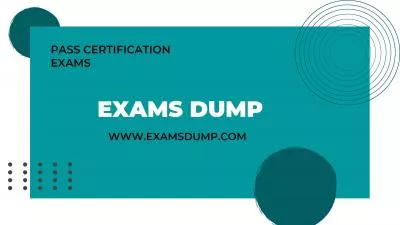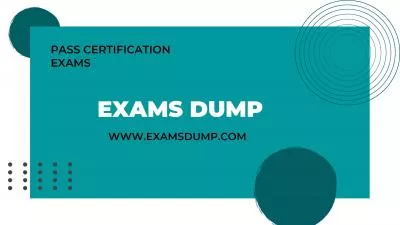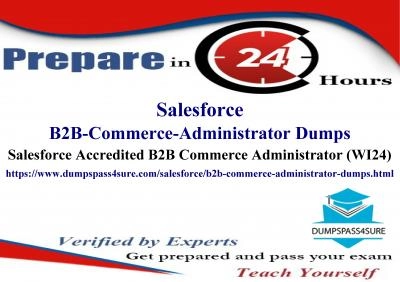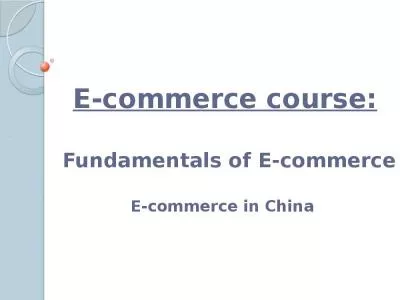PDF-LE REGISTRAIRE DES MARQUES DE COMMERCE
Author : udeline | Published Date : 2021-08-27
1OPICCIPOTHE REGISTRAR OF TRADEMARKSCitation 2018TMOB156Date of Decision 20181210IN THE MATTER OF AN OPPOSITIONOctobers Very Own IP HoldingsOpponentAndMichael Di
Presentation Embed Code
Download Presentation
Download Presentation The PPT/PDF document "LE REGISTRAIRE DES MARQUES DE COMMERCE" is the property of its rightful owner. Permission is granted to download and print the materials on this website for personal, non-commercial use only, and to display it on your personal computer provided you do not modify the materials and that you retain all copyright notices contained in the materials. By downloading content from our website, you accept the terms of this agreement.
LE REGISTRAIRE DES MARQUES DE COMMERCE: Transcript
1OPICCIPOTHE REGISTRAR OF TRADEMARKSCitation 2018TMOB156Date of Decision 20181210IN THE MATTER OF AN OPPOSITIONOctobers Very Own IP HoldingsOpponentAndMichael Di CosmoApplicant1707760 for 6IXApplic. Damian . Constantin. University of Pitesti, Romania. Define the meaning of e-business and e-commerce and their different elements. Understanding different e-business models. Presentation Objectives. Reach. © of images belongs to the respective copyright holders. A PRESENTATION . BY . PAVAN DUGGAL. ADVOCATE, SUPREME COURT OF INDIA. PRESIDENT, CYBERLAWS.NET. PRESIDENT, CYBERLAW ASIA. HEAD, PAVAN DUGGAL ASSOCIATES. . The language of decision-makers. . . . . . Les marques idéales de champagne . pour les Français. Juillet 2014. Policy for a . Return on . Marketing . Investment, . LE . FONDS . DE . COMMERCE . Prof. AMISI HERADY. CONTENU DE L’EXPOSE. I. INTRODUCTION. II. NOTION DU FONDS DE COMMERCE. III. COMPOSITION DU FONDS DE COMMERCE. IV. OPERATIONS PORTANT SUR LE FONDS DE COMMERCE. Ch. A. racter. . Z. Benoit Tranzer. Directeur. . Général. b. enoit.tranzer@millwardbrown.com. . Tel: +33603132117. Mesurer les personnalités des marques. Sexy. desirable. Idéaliste. . différente. Chapter 2. E-Marketplaces: Structures, Mechanisms, Economics, and Impacts. 2-. 2. Learning Objectives. Define e-marketplaces and list their components.. List the major types of e-marketplaces and describe their features.. The phenomenal growth of E-Commerce can be attributed to the reduction of friction in business transactions over the network. This reduction has lead to improvements in the quality of service, customer care, lower cost to the consumer & faster execution of transactions, including instantaneous delivery of goods(software, digital music). Traditionnellement, leur territoire (Nitassinan – notre terre) étaient une partie de ce qui est actuellement le Québec et le Labrador. Ils continuent à y vivre aujourd’hui.. Nitassinan. Dans ce territoire, il y deux branches d’. Dell EMC DES-5222 exam study guide is designed to help you prepare for the Data Center PowerSwitch Implementation Engineer certification exam. It contains a detailed list of the topics covered on the Professional exam, as well as a detailed list of preparation resources. kindly visit us at www.examsdump.com. Prepare your certification exams with real time Certification Questions & Answers verified by experienced professionals! We make your certification journey easier as we provide you learning materials to help you to pass your exams from the first try. Professionally researched by Certified Trainers,our preparation materials contribute to industryshighest-99.6% pass rate among our customers. kindly visit us at www.examsdump.com. Prepare your certification exams with real time Certification Questions & Answers verified by experienced professionals! We make your certification journey easier as we provide you learning materials to help you to pass your exams from the first try. Professionally researched by Certified Trainers,our preparation materials contribute to industryshighest-99.6% pass rate among our customers. kindly visit us at www.examsdump.com. Prepare your certification exams with real time Certification Questions & Answers verified by experienced professionals! We make your certification journey easier as we provide you learning materials to help you to pass your exams from the first try. Professionally researched by Certified Trainers,our preparation materials contribute to industryshighest-99.6% pass rate among our customers. Eager to conquer the B2B-Commerce Administrator Study Material and elevate your professional standing? DumpsPass4Sure is your gateway to success, offering unparalleled resources and support tailored specifically for the challenges presented by the exam platform. Our meticulously crafted content cover everything from setting up and configuring the B2B platform to mastering order management and analytics. DumpsPass4Sure is committed to ensuring that you not only pass the exam with flying colors but also gain practical insights to excel in your B2B Commerce endeavors. To sweeten the deal, we\'re excited to present an exclusive 20% discount on all B2B-Commerce-Administrator Dumps material. We believe that quality education should be accessible, and this discount is our way of supporting your journey. Ready to unlock your potential and embrace success? Choose DumpsPass4Sure as your partner in B2B exam excellence. Seize the 20% discount with the code \"SAVE20\" and step confidently into a future of achievement and recognition.
For more information: https://www.dumpspass4sure.com/salesforce/b2b-commerce-administrator-dumps.html E-commerce. E-commerce. . in China . E-commerce in China . Though computers have been widely used in our country over the past 50 years, e-commerce is only with a history of 10 years. The first e-mail sent in Sep., 20, 1987 crossed the Great Wall...
Download Document
Here is the link to download the presentation.
"LE REGISTRAIRE DES MARQUES DE COMMERCE"The content belongs to its owner. You may download and print it for personal use, without modification, and keep all copyright notices. By downloading, you agree to these terms.
Related Documents

